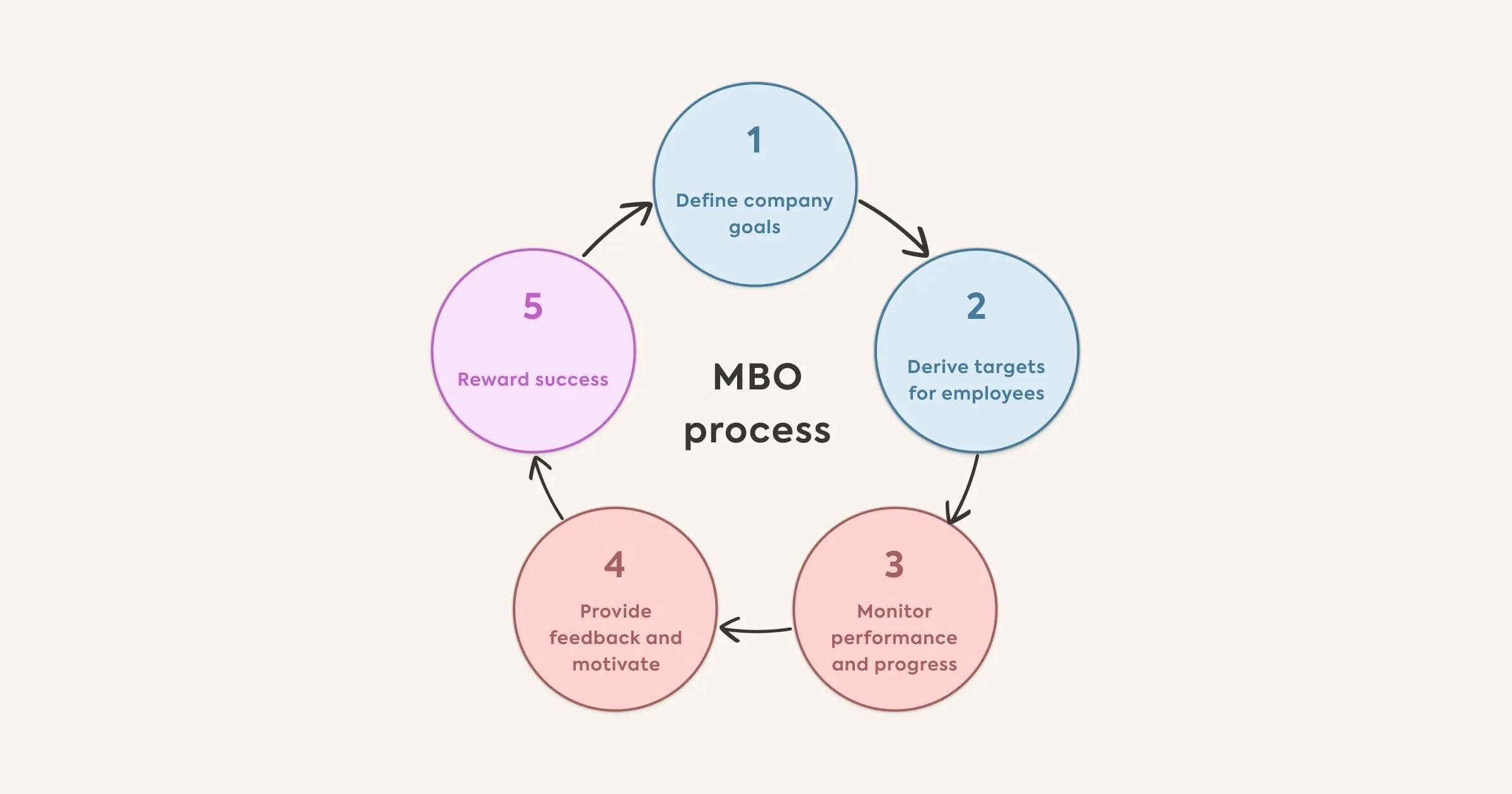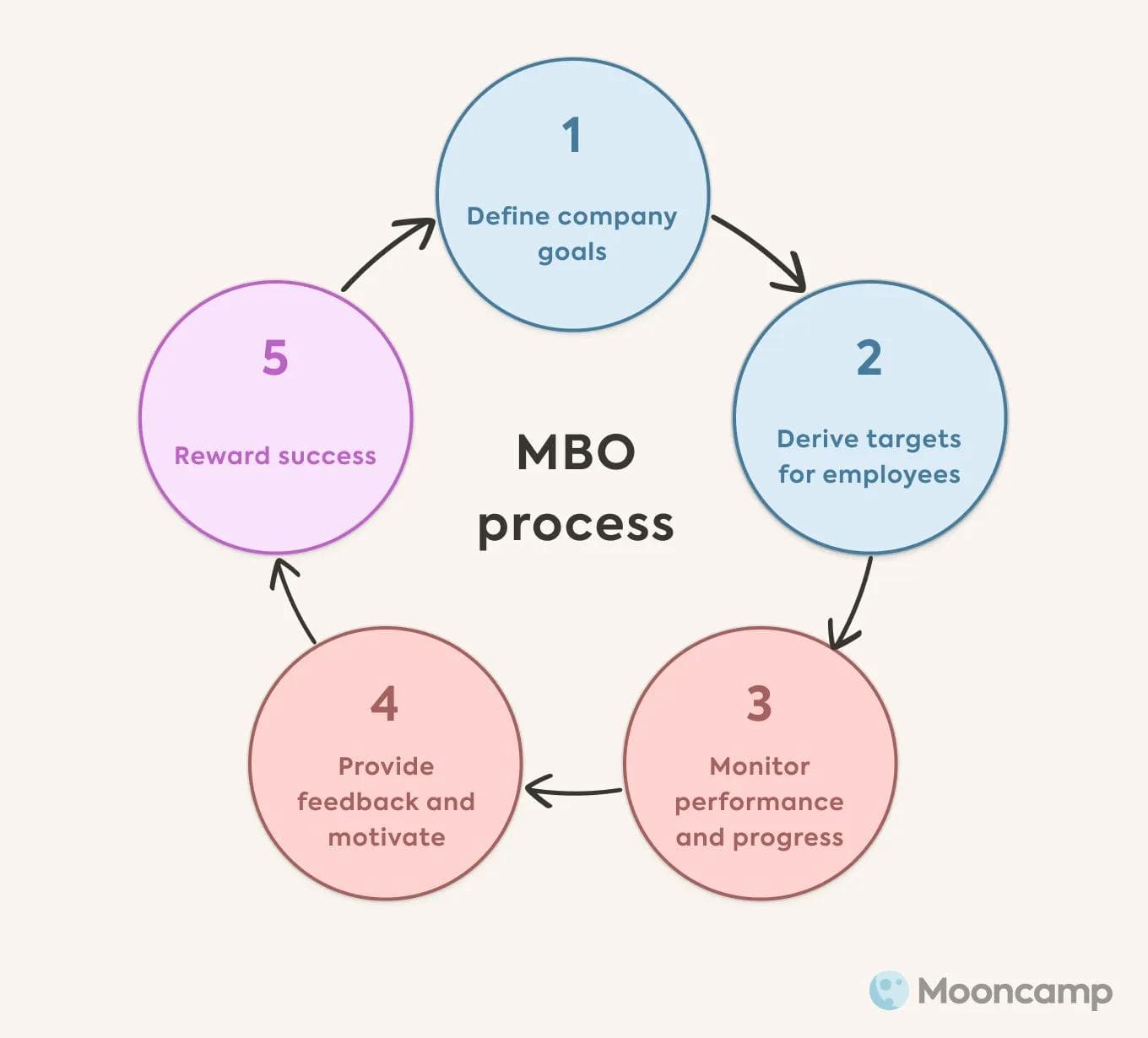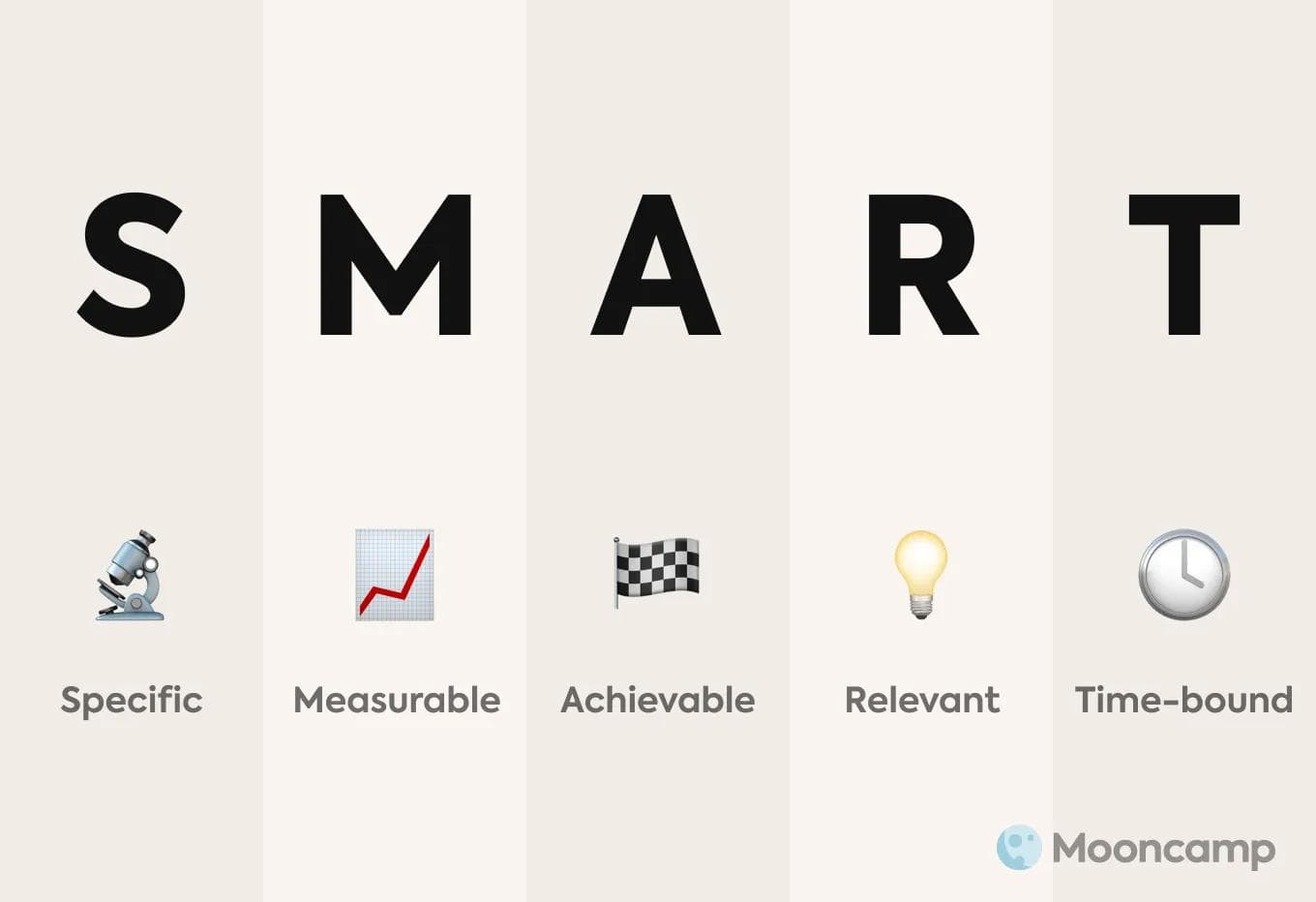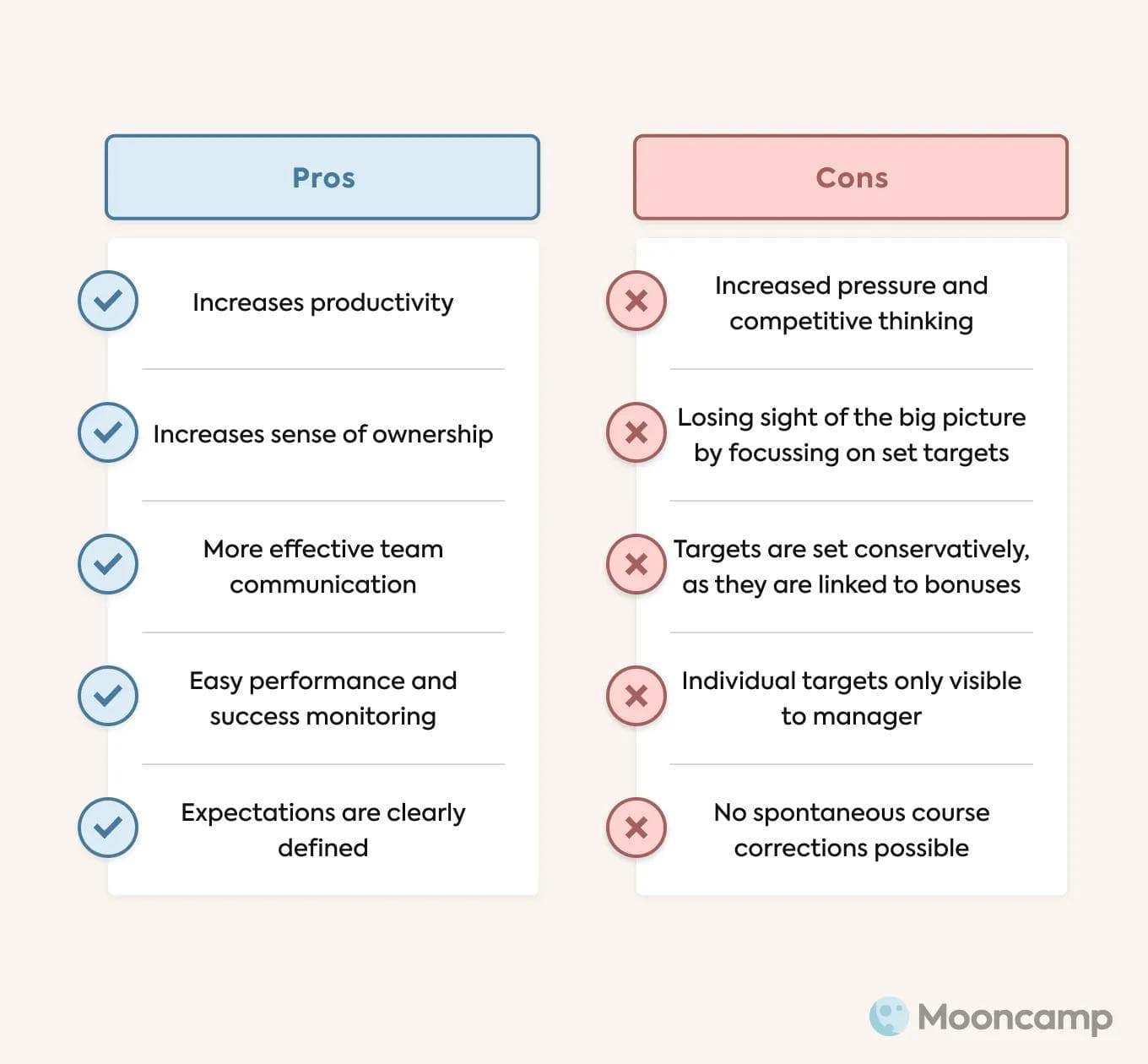Management by Objectives: The complete guide

You've got a vision for your company, the organizational goals for the next year are set and all that's really left to do now is to get everyone in the team pulling in the same direction - this is where leadership comes in. Probably the most familiar approach to date for getting employees on track when it comes to goals is "Management by Objectives (MBO)".
In this article, we'll explain exactly how this leadership style from the 1950s works, what the advantages and disadvantages of Management by Objectives are, and whether the whole concept is still relevant today.
What to expect:
- What is Management by Objectives? Definition and examples
- Managing by Objectives: How the MBO approach works
- How should objectives be formulated for MBO?
- How good is Management by Objectives? Advantages and disadvantages
- A replacement for MBO? More agility with OKR
- Summary
- Management by Objectives – FAQ
What is Management by Objectives? Definition and examples
Management by Objectives (MBO) is defined by its very name - it literally means "management by agreement on objectives". Although this sounds terribly dull, it sums up the core of the management method pretty well: A company sets itself higher-level organizational objectives and these are then passed on to the employees in a cascading manner.
In other words, sub-goals (e.g. for departments) and, in turn, personal goals for each individual employee, are derived from the company objectives. Each person is then responsible for pursuing their own individual objectives, preferably using their very own methods and tools.
Ideally, this enables the entire organization at all (corporate) levels to work toward the higher-level company goals.
Originally, the approach was developed in the 1950s by the U.S. economist Peter Drucker. At that time, it completely revolutionized the world of management. The core of this management style, as practiced in companies today, essentially consists of annual target agreements between a manager and an employee.
As a rule, in the MBO process, personal objectives are expected to be met at 100 percent. Also, meeting one's own objectives is usually linked to rewards, bonus payments or salary increases. Motivation thus derives externally.
Management by Objectives – Example
As a practical example, Management by Objectives for a marketing department could look like this:
The marketing department is given a total of one to three goals from top management for the upcoming business period (usually one year). They are to…
- double the number of newsletter sign-ups within a year
- triple the number of social media followers
- attract 40 percent more visitors to the company's website
Based on these joint objectives, marketing management then approaches the individual team members and holds a personal goal-setting meeting for each person. In this meeting, managers and employees discuss the marketing efforts they can make to achieve the concrete goals in marketing for the upcoming year – and the individual personal goals that result for each team member.
Managing by Objectives: How the MBO approach works
The MBO method works in five steps:
1. Define company objectives
The first step is to develop objectives for the entire company. In other words, you simply put down on paper what you want to achieve with your company in the long term – ideally in the form of a vision, a mission and some short and mid-term goals.
2. Communicate personal objectives to the team
Once the company objectives are set, the next step is to translate them top-down into individual employee objectives for each team member. What's important: You should always make sure that the objectives set are worded in a SMART way (more on this later). Only then are they feasible and measurable for everyone.
Personal meetings are held with all employees to discuss which specific objectives can be achieved in what time-frame and by which means. It is crucial that everyone understands how exactly they contribute to the overall organizational performance by completing their individual tasks.

3. Monitor performance and progress
Employees attain objectives independently and on their own responsibility. Nevertheless, you should regularly check in on how things are going.
How exactly this is done is completely up to you. However, project management tools in which each team member records their progress and enters key performance indicators have proven their worth. This way, you always have all the figures in one place and can track where the team stands in the objectives process.
4. Provide feedback and motivation
Through feedback, all team members will know where they stand with their performance. Performance appraisals are therefore pretty essential in the Management by Objectives approach. They allow you to give personal feedback to each team member and communicate what is going particularly well and where there is still room for improvement.
This kind of constructive feedback is essential in employee management as it promotes communication between managers and their employees and provides valuable insights that can ensure that the team as a whole stays highly motivated and works more productively.
5. Reward success
In the MBO framework, success is not the only reward for hard work. Material rewards in particular are an important component in the MBO process such as bonus payments, salary increases, additional responsibility or extra vacation days. The extra motivation in Management by Objectives therefore almost always comes from monetary or material compensation.
These rewards come at the end of the MBO process, boosting morale and keeping the team motivated and ready to go the extra mile for the company in the next MBO cycle.
How should the objectives for MBO be formulated?
We have already addressed this: To ensure that they work out and can be implemented by all employees on their own initiative, you should always focus on choosing the "SMART" way while setting objectives. SMART means:
- Specific: The goal is clear and understandable
- Measurable: The goal is as measurable as possible
- Achievable: The goal is actually achievable
- Realistic: The targets are realistic
- Time-bound: Fixed dates or deadlines are agreed upon
Only with goals formulated in this way can you reliably measure success or failure (or the degree to which goals have been achieved). That is important because MBO is also about bonuses, salary increases or promotions - all of which should not be awarded at the drop of a hat.

How good is Management by Objectives? Pros and cons
As revolutionary as Management by Objectives was in the management world in the 1950s, the model has since faded. More and more companies are trying new management styles. If you take a look at the pros and cons of MBO, it very quickly becomes clear why this is the case.
Pros of MBO
Management by Objectives is in itself a sound management method because it…
- increases the personal responsibility of employees - everyone can decide for themselves how they will achieve specific goals
- focuses on goals and the contribution that each individual makes to the overall success of a company
- promotes productivity by making all team members aware of the importance of their work through personal goals
- creates promotion opportunities for dedicated employees
- manages expectations. Everyone knows their role and responsibilities within the team
- makes the monitoring of performance and success easier; after all, all goals are specifically stated in measurable terms or objective standards
Cons of MBO
On the other hand, Management by Objectives also has some significant shortcomings. When working according to MBO…
- the pressure to perform increases because the objectives set must be met at 100 percent
- the focus is only on achieving objectives and the associated monetary reward. It is easy to lose sight of the "big picture"
- goals are "imposed" on employees in a top-down manner - participation and co-determination in the goal-setting process are sought in vain
- goals are set conservatively, i.e. only high enough to be attainable - after all, it's all about salary increases and bonuses, the desire for more is easily lost
- there is no transparency - only managers and the employees responsible know what targets they agreed on with each other.
- target setting is usually done for one year because of the large amount of coordination required (many individual meetings), spontaneous course corrections are therefore hardly possible.

A replacement for MBO? More agility with OKR…
Everyday work no longer consists of monotonously performed tasks. Agility, transparency and focus are becoming increasingly important in our fast-paced world, and the rather cumbersome Management by Objectives therefore inevitably leads to problems in practice. More and more companies are turning to more agile management methods – such as OKR.
The abbreviation stands for Objectives and Key Results – a modern management method, adapted to the mindset of the "new-work generation", which also works with clear targets, but explicitly involves both the employee and the manager in goal setting. OKR links top-down targets from the management with bottom-up planning by teams and individual employees.
In the OKR method, a qualitative goal (Objective) is linked to two to four quantitative goals (Key Results), typically every quarter. This way you can react to changes much faster. In addition, the framework relies more on intrinsic motivation than on external incentives. Successes are being celebrated, each objective is transparent to everyone and performance appraisals are happening much more frequently.
OKR was developed in the 1970s by Andy Grove, the third employee and then CEO of microchip manufacturer Intel. Based on Peter Drucker's MBO approach, Grove developed the OKR method and introduced it at Intel. However, OKR only truly became popular – and how could it be otherwise – through Google. To find out more about how OKR came to exist and how they work, check out our OKR guide.
Summary
MBO has long been the go-to method for goal management. Today, it's still firmly anchored in many companies, especially in medium-sized businesses and enterprises. However, Management by Objectives is simply no longer up to date for today's world of work. Setting goals a year in advance has become impractical in today's rapidly changing environment.
OKRs, on the other hand, respect the complexity and dynamics of our environment – and find proper solutions to many of the disadvantages listed above. All in all, this makes it superior to traditional Management by Objectives.
Interested in learning more about this? Well, we've compared the similarities and differences of OKR vs. MBO in detail. Check it out!
Management by Objectives – FAQ
What is meant by MBO?
MBO stands for "Management by Objectives" and is basically nothing other than "management by agreement on goals". The term refers to a strategic approach in which overarching company goals are communicated top-down to employees and translated into individual goals. The aim is to improve the company's performance.
How does the Management by Objectives approach work?
Management by Objectives works in five stages, each of which is completed within a cycle (usually within one year): Objectives are set (1) and transferred to employees (2), who implement them independently. Meanwhile, management monitors performance and progress (3), provides feedback and motivation (4), and finally rewards success (5) at the end of the cycle if the goals set are reached.
What are examples of Management by Objectives?
Examples of Management by Objectives in sales might be to increase sales by 20 percent or to shorten the sales cycle to three months. In HR, objectives could be "hire at least two new employees in marketing" or "keep compensation constant at 10 percent above the industry average."

